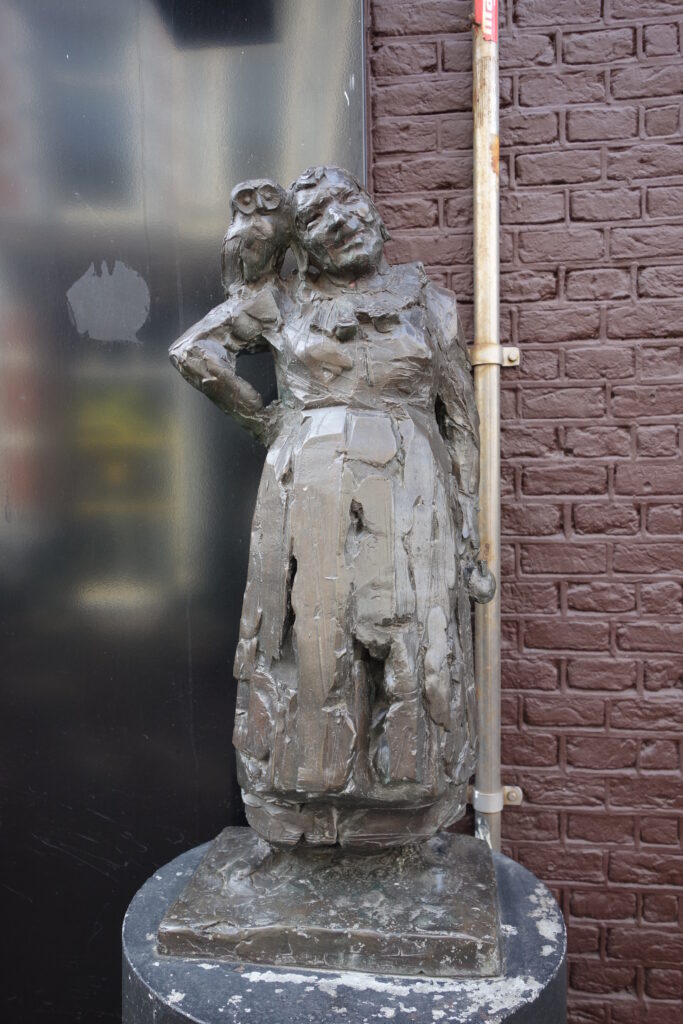Masterpiece Story: Portrait of Madeleine by Marie-Guillemine Benoist
What is the message behind Marie-Guillemine Benoist’s Portrait of Madeleine? The history and tradition behind this 1800 painting might explain...
Jimena Escoto 16 February 2025
Although Frans Hals’ Malle Babbe was always considered a tronie or a fictional character study, the portrait is based on a woman whom the Dutch Golden Age pioneer crossed paths with in real life. But who was this so-called Malle Babbe?
Malle Babbe was previously thought to be painted around 1633-1635; new research suggests it should be dated between 1640 and 1646. At that time, Frans Hals (1580-1666) was already an established painter in Haarlem, the city he lived and worked in, which is also known for its textile and beer brewing industries. It then would come as no surprise for the middle-aged local woman in the said painting to be featured in one of the Haarlem taverns. And there she is, sitting at the table and holding a large tankard of beer in her right hand, with incredible expression and liveliness, almost as if she was right in front of the viewer.

Frans Hals, Malle Babbe, 1640-1646, Gemäldegalerie, Staatliche Museen zu Berlin, Berlin, Germany.
Frans Hals painted her face clearly distinguishable with a large, almost manic grin. She is seemingly caught right in the midst of an animated conversation. Hals was one of just a few early modern painters who would repeatedly paint his sitters grinning on their faces. However, for Hals, this expression is often reserved for the sitters of a lower social ranking.

Frans Hals, Malle Babbe, 1640-1646, Gemäldegalerie, Staatliche Museen zu Berlin, Berlin, Germany. Detail.
On her left shoulder, we can see an owl. The creature can be viewed as a symbol of drunkenness in this case, which is a reference to a Dutch proverb “zoo beschonken als een uil (as drunk as an owl).” This stands in opposition to the popular belief that owls are symbols of wisdom. Dutch writers of the time used that image to warn against a lack of moderation, particularly when it comes to consuming alcohol: “The fool says that if you keep on drowning yourself in wine then you’ll be like me, you’ll be a fool.”1

Frans Hals, Malle Babbe, 1640-1646, Gemäldegalerie, Staatliche Museen zu Berlin, Berlin, Germany. Detail.
The painting is completed with Hals’ signature brushwork characterized by liveliness and spontaneity. Unlike the more formal and posed portraits of the time, Malle Babbe captures a snapshot, a fleeting moment. The sitter’s unreserved laughter gives us the impression that we must have run into her mid-conversation.
The inscription on the back of the canvas reads: “Malle Babbe van Haerlem […] Frans Hals.” However, a better-known title for it is Malle Babbe, which translates to “mad” (malle) Babbe. According to the Haarlem archives, the sitter was Barbara Claes (died 1663). Claes was known in Haarlem as “mad,” “silly,” or a “fool.” These were names imposed on people afflicted with mental illness or psychological disorders, or people who did not conform to the norms of the 17th-century Dutch society.
In 1646, Barbara Claes was committed to the Haarlem workhouse (werkhuis) which was an institution for any individual who did not fit in, including children of Frans Hals himself. His son Pieter and eldest daughter Sara lived there as well, the latter ended up in the workhouse for having given birth to her second illegitimate child. The reason for confining Barbara Claes is not known but she remained in the workhouse for the rest of her life.

Kees Verkade, Bronze Malle Babbe, 1978, Barteljorisstraat, Haarlem, Netherlands. Photo by Dqfn13 via Wikimedia Commons (CC BY-SA 4.0).
The behavior represented here by Barbara Claes, or Malle Babbe, defied the Calvinist rules of conduct which bound the majority of the regular sitters of Hals’ portraits, that is the Dutch patrician elite.
Frans Hals, whose historic monographic exhibition was previously held in the Rijksmuseum and is now presented in the Gemäldegalerie in Berlin, was a keen observer of life and a master of his genre who was clearly ahead of his time, giving space in his art to those who did not fit in, were marginalized and discriminated.
A very similar portrait of Malle Babbe can be found in the collection of the Metropolitan Museum of Art which was initially attributed to Frans Hals as a copy of his Berlin painting, however today it is considered to be by one of his pupils.

Workshop of Frans Hals, Malle Babbe, 17th century, Metropolitan Museum of Art, New York City, NY, USA.
An exact composition copy of the famous portrait was also done by Gustave Courbet (1819–1877), a famous French Realist painter, while the original painting was put on view in Munich. Courbet was known to be an admirer of Hals’ style.

Gustave Courbet, Copy of Malle Babbe, 1869, Hamburger Kunsthalle, Hamburg, Germany.
However, the most unusual copy is to be found in the Rijksmuseum, authored by the infamous art-forger Han can Meegeren (1889–1947), who usually copied the style of Johannes Vermeer, in this case tried to forge the loose technique of Hals.

Han van Meegeren, Malle Babbe, 1930–1940, Rijksmuseum, Amsterdam, Netherlands.
Dirck Pietersz. Pers, Suyp-Stad of Dronckaerts Leven, Amsterdam 1628, p. 35: “De Sot seght, als ghy blijft bedoven in den wijn, / Dan suldy zijn als ick, een Narre suldy.”
Bart Cornelis, Friso Lammertse, Justine Rinnooy Kan and Jaap van der Veen, Frans Hals, exhibition catalogue, published by National Gallery Global & Rijksmuseum, London & Amsterdam, 2023.
DailyArt Magazine needs your support. Every contribution, however big or small, is very valuable for our future. Thanks to it, we will be able to sustain and grow the Magazine. Thank you for your help!